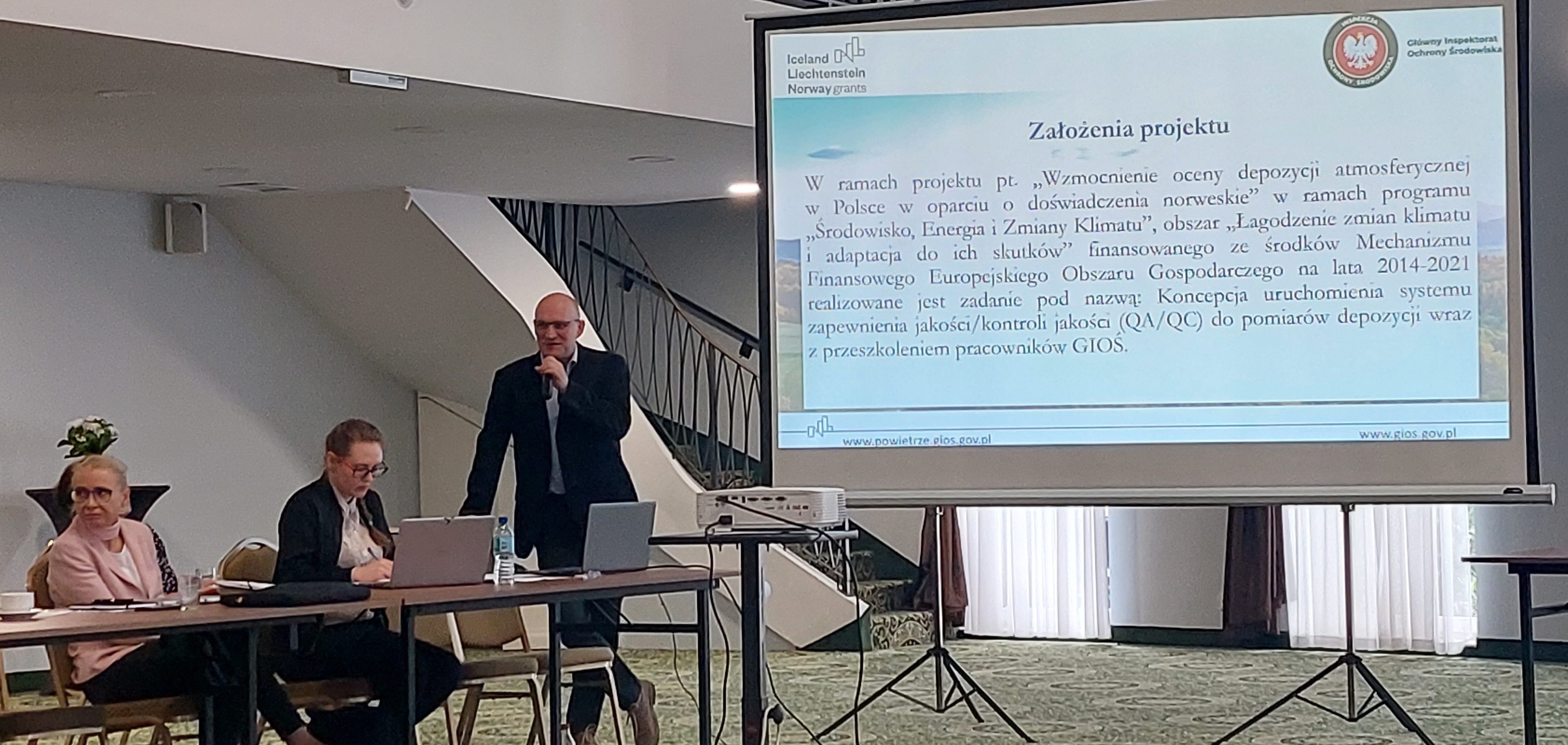On 24-25 May, a workshop session was held as part of the activity entitled “Concept for the implementation of a quality assurance/quality control (QA/QC) system for deposition measurements together with workshop of GIOŚ [Chief Inspectorate of Environmental Protection] staff”. The workshop was organised as part of the project “Strengthening of atmospheric deposition assessment in Poland based on Norwegian experience.”
The Norwegian delegation was led by Cristina Guerreiro, Research Director of the Norwegian Institute for Air Research (NILU), who is also the project manager on the Norwegian side.
The meeting was also attended by First Deputy Chief Inspector of Environmental Protection Magda Gosk, who paid special attention to the cooperation and exchange of experience. “We are strengthening further areas of air quality assessment, this time in the field of atmospheric deposition. We are convinced that the exchange of experience with our Norwegian partner will allow us to continue improving our measurement methodologies” Magda Gosk said.

Photo 1. Magda Gosk, First Deputy Chief Inspector of Environmental Protection, addressing the workshop participants
As part of the project, a new system for measuring, assessing and presenting information on air pollution deposition is being developed. This system will be a comprehensive source of information on pollutant deposition providing data for both national needs and purposes arising from international conventions. Among other things, it will be a source of information for water management or the study of the effects of the chemical composition of precipitation on ecosystems. To provide reliable information on the deposition of atmospheric pollutants, work on the development of quality assurance/quality control procedures for deposition measurements is a very important element of the project, and the workshop was dedicated to this issue.

Photo 2. Tomasz Frączkowski, Head of the National Reference Laboratory for Air Quality, presenting the project assumptions
Apart from the employees of the Chief Inspectorate of Environmental Protection (GIOŚ), workshop participants included representatives of the Norwegian partner of the project, represented by the team of the Norwegian Institute for Air Research (NILU), and representatives of institutions involved in deposition measurements: Institute of Environmental Protection – National Research Institute, Institute of Meteorology and Water Management – National Research Institute, as well as representatives of institutions conducting research within the framework of Integrated Environmental Monitoring.

Photo 3. Cristina Guerreiro, Research Director of the Norwegian Institute for Air Research (NILU), speaking on quality assurance of deposition measurements in Norway
Prior to the workshop, the participants from the Norwegian Institute for Air Research visited the Central Research Laboratory of the Chief Inspectorate of Environmental Protection, Warsaw Branch, where they had an opportunity to learn about the scope of research conducted by the Laboratory and exchange experiences in performing chemical analyses for the purposes of monitoring air quality and other components of the environment.

Photo 4. Representatives of the Norwegian Institute for Air Research accompanied by GIOŚ staff while visiting the Central Research Laboratory of the Chief Inspectorate of Environmental Protection, Warsaw Branch

The project under which the workshop took place is funded by the European Economic Area Financial Mechanism 2014-2021 under the Environment, Energy and Climate Change Programme, Climate Change Mitigation and Adaptation sub-programme.








